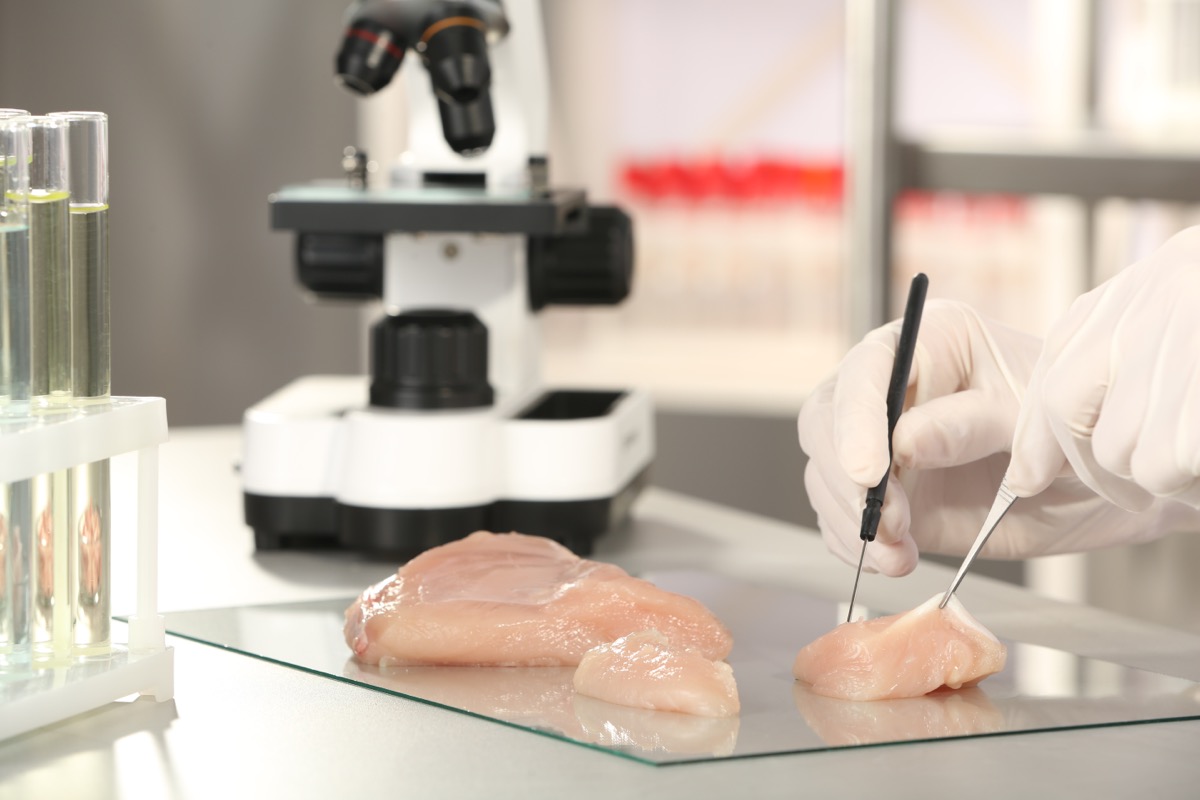RELATED: If You Bought This at Costco, Get Rid of It Immediately, FDA Says. On June 2, the CDC issued a warning that it was investigating a salmonella outbreak related to the consumption of raw frozen breaded stuffed chicken breasts. At the time the alert was issued, the CDC had received reports of 17 salmonella-related illness and eight hospitalizations in six states. No deaths had been reported at the time the alert was initially published. On the same day the CDC’s alert was published, the United States Department of Agriculture (USDA) issued a public health alert through its Food Safety and Inspection Service (FSIS) related to the salmonella outbreak. The FSIS reports that the affected chicken may be called “chicken cordon bleu,” chicken with “broccoli and cheese,” or “chicken Kiev.” According to the FSIS, cases of illness related to the consumption of the frozen chicken may have started as early as Feb. 21, 2021. For the latest recall news delivered straight to your inbox, sign up for our daily newsletter! After multiple cases of salmonella infections were reported, the Minnesota Department of Agriculture tested samples of raw, frozen, breaded, stuffed chicken breasts, finding that they were positive for salmonella enteritidis. However, there hasn’t yet been a full recall of the potentially-affected products. “FSIS has not received any purchase documentation, shopper records, or other traceable information at this time. Therefore, FSIS does not have the necessary information to request a recall,” the USDA reports. The CDC reports that diarrhea, fever, and stomach cramps are the most common symptoms of a salmonella infection, and that symptoms usually begin within six hours and six days of consuming contaminated food. While the majority of people will recover from the infection, young children, older adults, and the immunocompromised are more likely to experience serious illness. If you have more serious symptoms, including signs of dehydration, diarrhea accompanied by a high fever, and excessive vomiting, contact a medical professional. Since specific product information regarding the brands of chicken that may be contaminated is limited, the CDC recommends taking extra safety precautions if you are cooking chicken at home.ae0fcc31ae342fd3a1346ebb1f342fcb This includes washing hands, utensils, and surfaces that have been in contact with raw chicken with warm, soapy water for at least 20 seconds prior to and after contact, and separating raw chicken from food that will be eaten raw. The CDC also recommends ensuring that all poultry products have been cooked to at least 165 degrees Fahrenheit, using a food thermometer in the thickest part of the chicken to ensure it has reached an adequate temperature to kill off pathogens. And, sadly for air fryer devotees, the CDC cautions that neither the popular devices nor microwaves consistently cook frozen poultry to adequate temperatures, so it’s better to avoid using them to prepare frozen chicken. RELATED: If You Bought This Heinz Product, Throw It Away Now, USDA Says.



